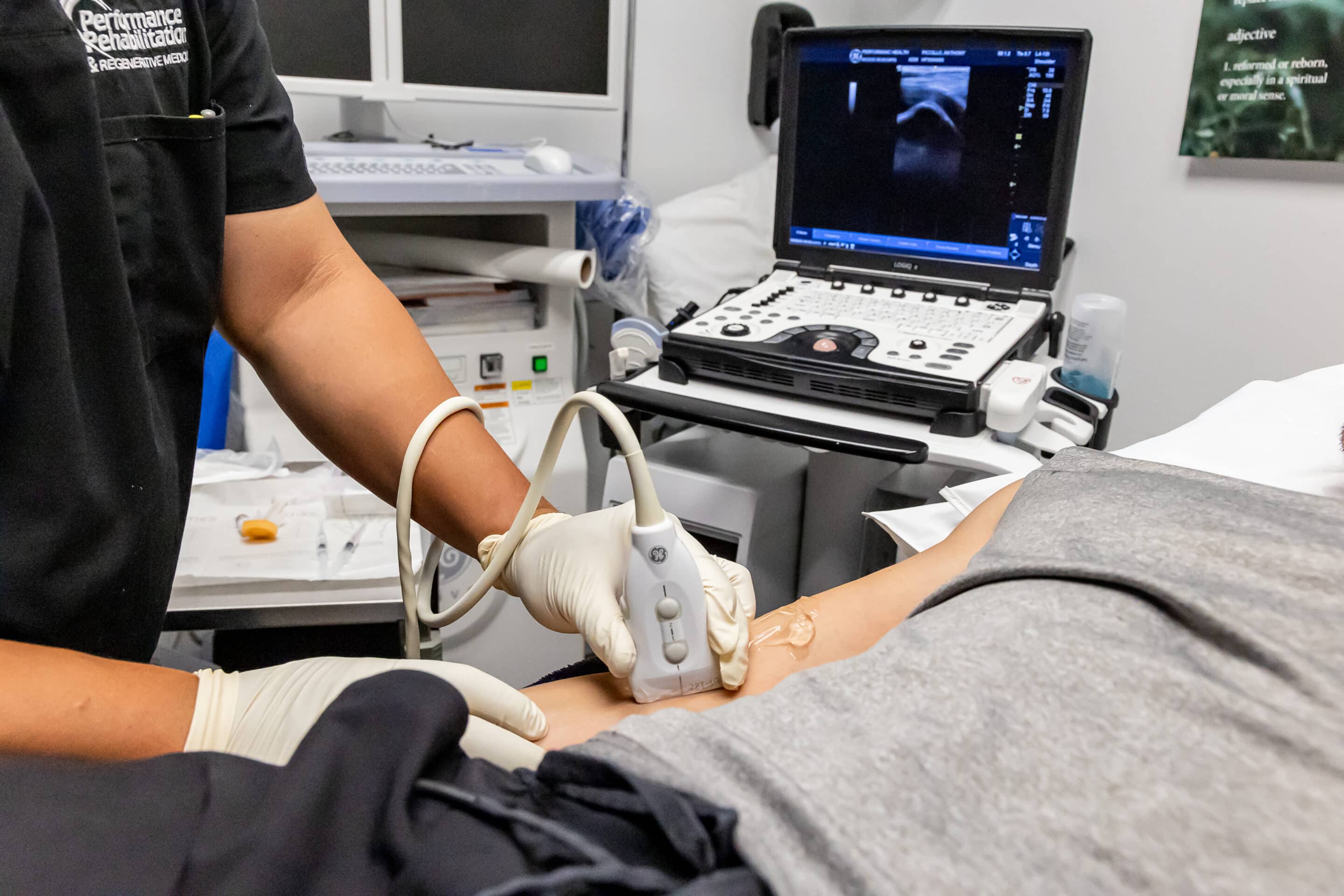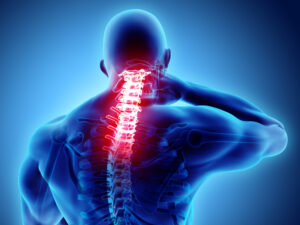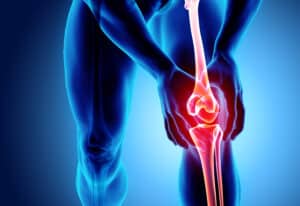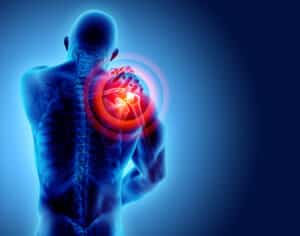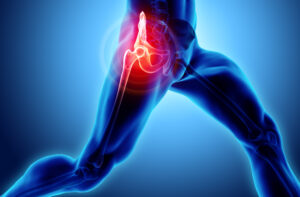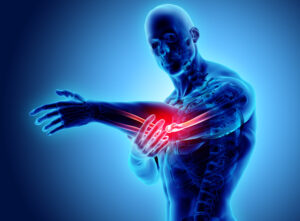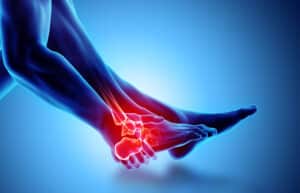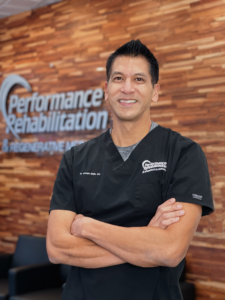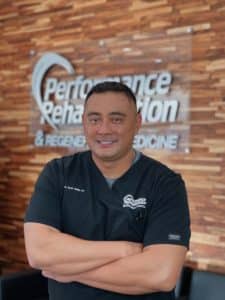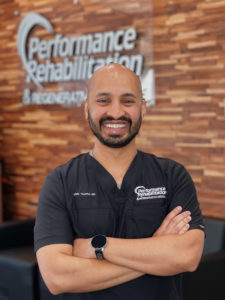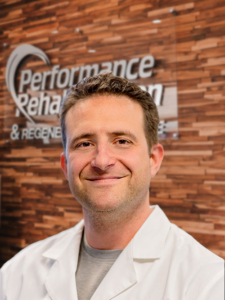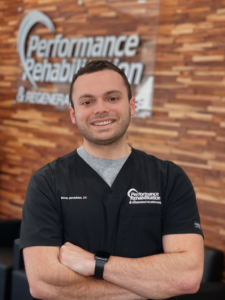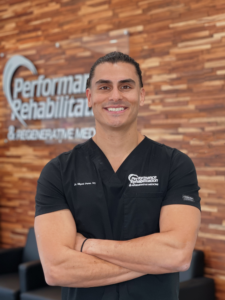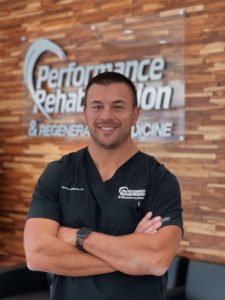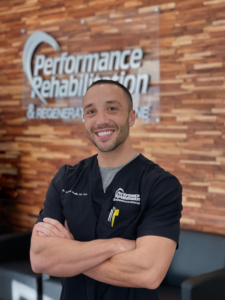Our NJ Sports Medicine Treatments & Services
Sports Medicine is a sub-specialty branch of medicine that focuses on the diagnosis and treatment of sports and fitness injuries. Performance Rehabilitation & Regenerative Medicine offers an interdisciplinary approach to treatment that addresses the unique relationship between Sports Medicine, Physical Medicine & Rehabilitation (PM&R), Regenerative Medicine and Physical Therapy.
Every member of the Performance Rehabilitation & Regenerative Medicine team has experience in treating all levels of athletes from the “weekend warrior” to advanced athlete. Our physicians are Board Certified in Sports Medicine and Fellowship trained in PM&R. Our team of physicians and therapists are committed to providing all of our patient-athletes with a thorough medical examination and a prompt diagnosis. In our shared decision-making model of care, each patient will receive a detailed explanation of their condition and treatment options, as well as the physician’s recommendation of how to return the athlete to their sport or activity as soon as possible.
If you are an athlete or exercise enthusiast and have been injured, or are frustrated with your current medical care, contact our Patient Care Coordinator today to make an appointment for a consultation. We can be reached at 908-754-1960 or you may contact us online.
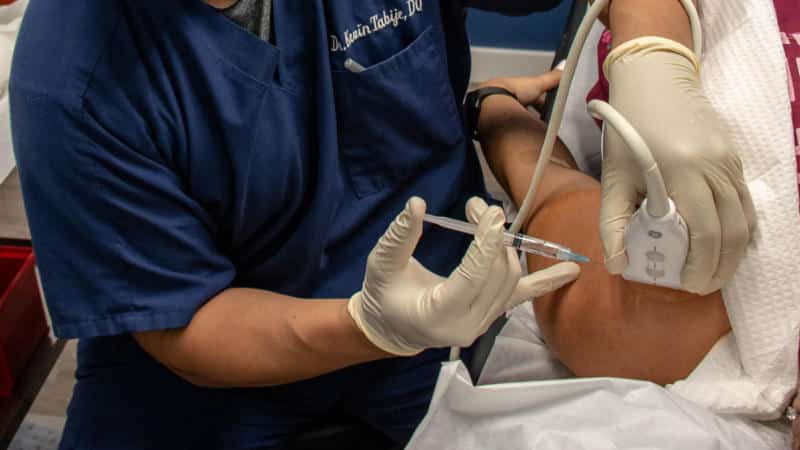
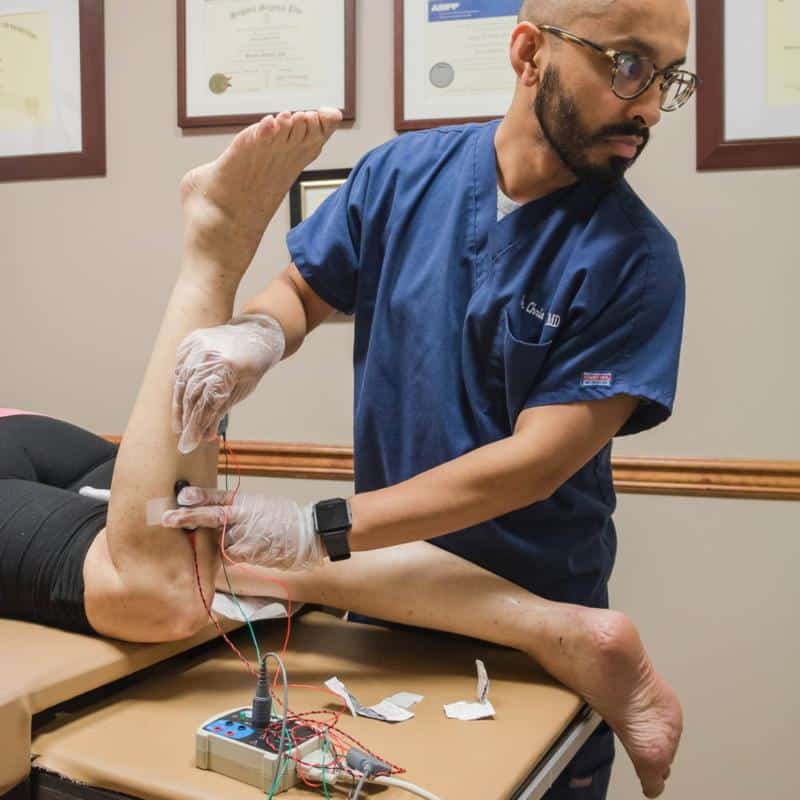
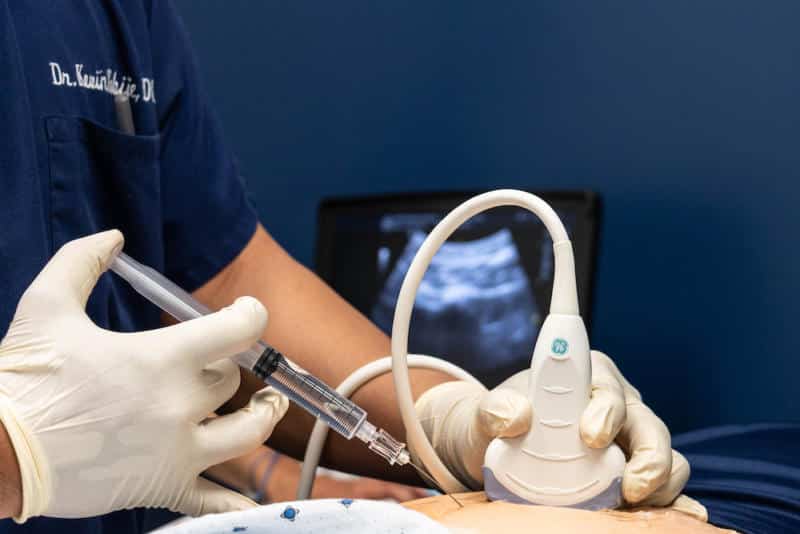
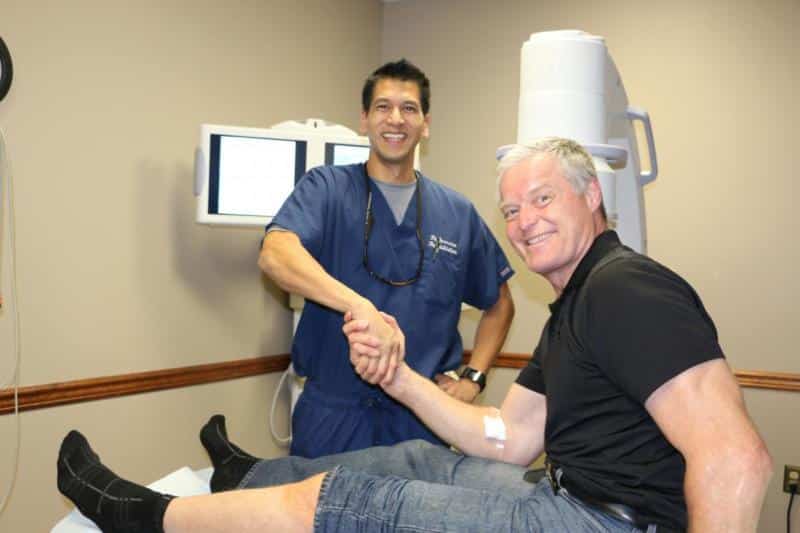
Achilles Injury & Achilles Tendon Rupture Treatment
The Achilles tendon is a strong fibrous cord that connects the muscles in the back of your calf to your heel bone. If you overstretch your Achilles tendon, it can tear (rupture) partially or completely. Symptoms include pain, possibly severe, and swelling near your heel, an inability to bend your foot downward or “push off” the injured leg when you walk, an inability to stand on your toes on the injured leg, and a popping or snapping sound when the injury occurs. Learn more…
Ankle Fracture (Post Surgical) Treatment
This injury is also known as a broken ankle. This means that one or more of the bones that make up the ankle joint are broken. A fractured ankle can range from a simple break in one bone, to several fractures, which forces your ankle out of place and may require that you not put weight on it for a few months. The more bones that are broken, the more unstable the ankle becomes. Symptoms include immediate and severe pain, swelling, bruising, tenderness when touched, inability to put any weight on the injured foot, or deformity, particularly if there is a dislocation as well as a fracture. Learn more…
Biceps Tendon Tear Treatment
The biceps muscle is located between the shoulder and the elbow on the front of the upper arm. A tear in this muscle can be partial or complete, either at the shoulder or the elbow. Symptoms include sudden, sharp pain in the upper arm, sometimes an audible pop or snap, cramping of the biceps muscle with strenuous use of the arm, bruising from the middle of the upper arm down toward the elbow, pain or tenderness at the shoulder and the elbow, weakness in the shoulder and the elbow, and difficulty turning the arm palm up or palm down. Learn more…
Knee Ligament Injuries- ACL, PCL, MCL, LCL Treatment
A ligament is a short band of tough fibrous connective tissue. Ligaments connect bones to other bones in and around joints. Ligaments limit the amount of mobility of a joint, or prevent certain movements altogether. You can injure a knee ligament through a sharp change in direction, landing wrong from a jump, or the most common a blunt force hit to the joint. Commonly, this type of injury is called a sprain. The sprain can be an overstretch, a partial tear, or a complete tear. Symptoms include pain (often sudden and severe), a loud pop or snap during the injury, swelling within the first 24 hours after the injury, a feeling of looseness in the joint, and inability to put weight on the joint without pain, or any weight at all. Learn more…
Meniscus Tear Treatment
The meniscus is a fibrocartilage structure located inside the knee joint that functions in providing cushioning for your knee. Furthermore, this cushioning functions in distributing synovial fluid in your knee to keep it moving properly as well as distributing the weight bearing forces throughout your knee. Symptoms can include feeling pain, buckling, instability, locking, and catching. Learn more…
Herniated Disc - Neck & Back Treatment
The disc in your spine function in providing support to your joints so that you can maintain your upright position and body weight. Between each vertebrae, life your disc, named for each segment they support within a region of your spine, Ex C7, T6, L5. A disc can be displaced and the level of displacement defines a herniated disc. These injuries of often painful, produce inflammation, and secondary pain generators such as spasm. Learn more…
Hip, Knee, or Shoulder Osteoarthritis Treatment
Osteoarthritis is a often associated with “wear and tear” of the joint. Mechanically, it is the degeneration of the joint, often associated with cartilaginous wearing prior to bony degeneration. It is most common in the hip, knee, and shoulder. Patients often report pain, stiffness, decreased ability to move the joint, and occasionally some catching. Learn more…
Patellofemoral Syndrome/ ITB Syndrome Treatment
In addition to the above syndromes, we offer treatment for anterior knee pain, unstable kneecap, as well as runner’s knee. These conditions are all variations of one another- all resulting from a “tracking” deficit in the knee cap. Usually, the knee cap is restricted in how it moves in the group, the usual culprit is tight and restricted IT Band-which has a direct insertion on the kneecap. This condition is very common in runners since the IT Band has physically shorted, prematurely pulling the kneecap during knee motion. Learn more…
Musculoskeletal Pain Treatment
Discomfort local to the area of interest, often associated with inflammation, stiffness, among other pain. Some common areas of pain are neck, shoulder, elbow, wrist, back, hip, knee, ankle and foot. Learn more…
Plantar Fasciitis Treatment
Inflammation to the plantar fascia- a thick connective tissue on the bottom of your foot, attaching to your heel bone. Most often, this tissue is irritated secondary to poor mechanics in the foot/ankle while walking and other weight bearing activities. Learn more…
Rotator Cuff Injuries/Rotator Cuff Tear Treatment
Rotator cuff is a group of four muscles that surround the shoulder joint keeping that help stabilize the shoulder joint. Rotator cuff along with other movement allow for movement of the arm within the shallow socket of the shoulder. Injury can occur to this muscles from a single injury or repetitive movements especially overhead motions from sports or from a job. Learn more…
Labral Tear - Hip/Shoulder Treatment
The labrum is a fibrous area of cartilage found in the hip and shoulder which helps to create a deepening of the socket and create additional surface area and improved stability of these joints. The labrum can become torn, which often leads to a complaint of deep pain found in these joints, especially with certain movements. In the shoulder, the most common labral tears are also known as SLAP tears or lesions. Learn more…
Spondylolisthesis Treatment
Spondylolisthesis refers to the forward motion of one vertebral body on the one below it. The degree of movement can be assessed using imaging and the categorized by severity. Common symptoms with these injury include localized low back pain, which worsens with movement. Patients may also report lower extremity radicular symptoms, including pain or other sensory deficits. More severe cases may require surgery. Learn more…
Tendinitis Treatment
Tendonitis is inflammation of a tendon, which is connective tissue that attaches bone to muscle. This usually occurs from repetitive over use of these structures and presents with pain and swelling in the area. Pain is typically worse with movement of the affected joint and most frequently found around shoulders, elbows, wrists, knees and heels.
Golfers’ Elbow is just tendinitis of the lateral collateral ligament of the elbow. Learn more…
Sprain or Strain Treatment
Sprains and strains are among the most common injuries that share similar signs and symptoms, but effect different structures in the body. A sprain is a stretching or tearing of ligaments, which are fibrous bands that connect two bones together to strength and stabilize your joints. Sprains are most commonly seen in the ankle but can occur in any joint of the body. These injuries occur when the ligament is overextended and the joint is severely stressed.
A strain is stretching or tearing of muscle fibers or tendon, which is the connective tissue attaching muscle to bone. Strains occur more commonly in larger muscle groups in the lower back and hamstrings. Symptoms typically include pain, swelling and an inability to move the affected area normally. Strains can be either acute or chronic nature. Acute strains are often called ‘pulled muscles’ and happen when the muscle fibers are over stretched/overextended. Chronic strains occur from repetitive, prolonged movement that leads to fatigue of the muscle. Learn more…
Hip and Knee Bursitis Treatment
Bursitis is the inflammation or irritation of the bursa. The bursa is a sac filled with lubricating fluid, located between tissues such as bone, muscle, tendons, and skin, that decreases rubbing, friction, and irritation. Bursitis is most often caused by repetitive, minor impact on the area, or from a sudden, more serious injury. The inflamed bursa can cause localized pain and tenderness. If the bursa is so inflamed that swelling occurs, it can cause local swelling and stiffness, sometimes associated with local redness and warmth. The inflammation can make it painful to support body pressure. Learn more…
Considering Sports Medicine Treatment Options in NJ? Contact Us.
For more information please feel free to contact one of our Patient Care Coordinators today at 908-754-1960 to make an appointment or you may book an appointment online.
